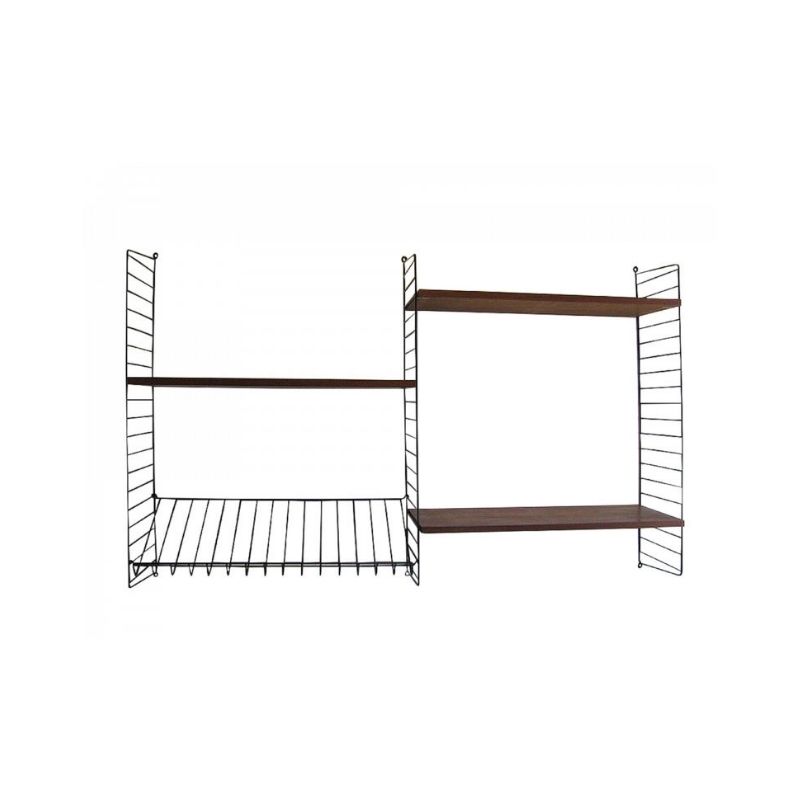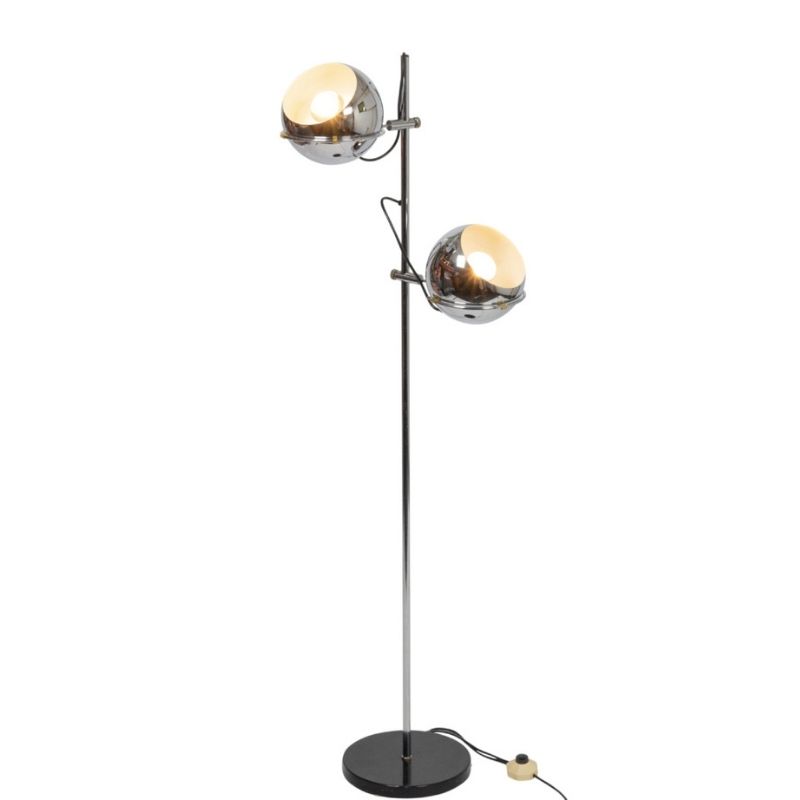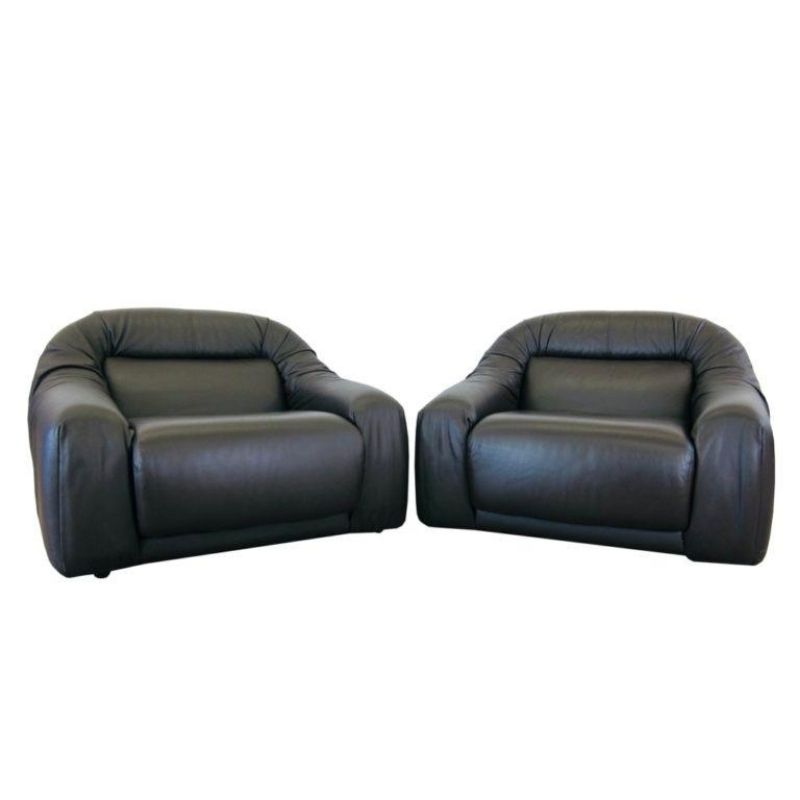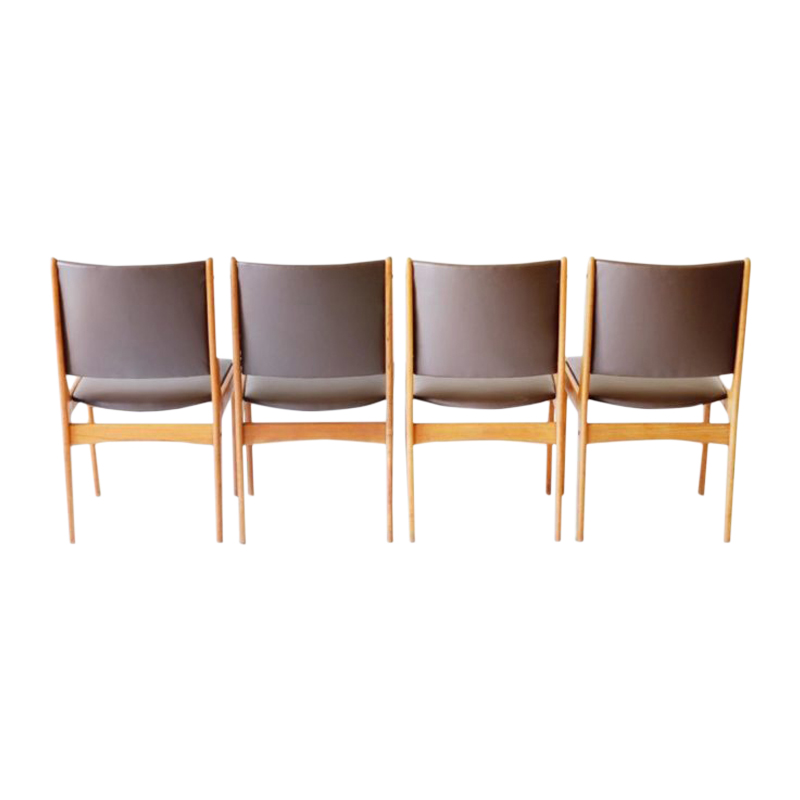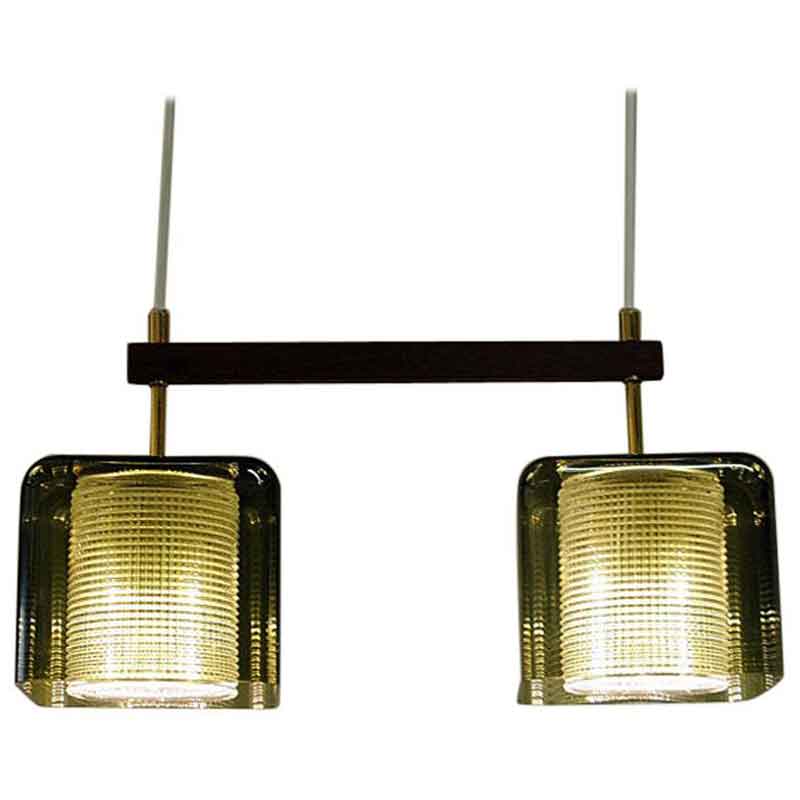I just got this for a very reasonable price. All my attempts to identify it leave me knowing less and less about it. Somehow I don't think it is Danish, maybe Swedish, British, or....
The lower cabinets all open with a key (incidentally identical to my Gunni Omann desk). The top drawers do not have black paint inside the pulls, although every photo looks like that.
And it is completely unmarked, except for a plywood grading stamp (B/BB -19).
Any leads? Country of manufacture?
http://www.flickr.com/photos/79973393@N02/9385252574/

more photographic details
MCM2: I am going to look into the two names you suggested. I know the Danes pretty well, but I don't know British makers at all. In the Southwestern US we don't see much British product. (Or that of any other european countries, for that matter) Thanks!
Onno: I believe I do control the drawers, if by that you mean that I am able to open them and look for tags. I just bought the piece. There are no markings, nor any indications that I recognize of lost markings.
And here are some detail shots. There are a number of construction details that are unlike most Danish furniture, and might either pin down a manufacturer or perhaps the country of origin.
Hmmm
I see what you mean about the similarity to Wilhelm Renz. Completely new name to me. Much more similar than anything I foind on my own, although clearly not the answer. Now if I can figure out who might have made a lower end piece very similar, I might actually have something..
The leg structure
appears to be made of a smooth wood, one with very little visible grain. If that's the part you describe as made of ash, I couldn't agree; ash usually has a very pronounced grain, more open even than that of the oaks . . . does it not ?
Beautiful piece. What am I seeing in the shot with the door ajar -- some sort of magnetic latch ?
SDR:
The metal piece is a door stop. I've never seen a stop like it before. It is shaped like darth vader's helmet, with a nail going down through the center (visible in the photo). Nothing magnetic about it.
The doors are held closed by the locks. If not locked they can swing freely, although the slight friction of the piano hinge keeps them from flopping around.
Regarding wood species. The photo is lying to you; it is blurring out all the grain entirely. The leg is teak. The horizontal board behind the leg (don't know the name) is the secondary wood that has been colored to match the teak. It is probably not useful to the identification of the piece that it isnt teak, since my experience tells me 99.9% wouldnt notice it, and the rest wouldn't point it out. The secondary wood does have an open grain to better mimic the teak (better than the usual secondary wood, beech, would). I am not certan it is ash. The rings are a bit less distinct than I'd expect of ash, but overall it looks similar to ash or hickory. And it is hard.
Solid lead: Gustav Bahus
The sideboards of the firm Gustav Bahus and Eft, of Norway, who notably producer the Bambi for Rastad and Relling, have similar, if not identical bases and legs.. They also use the little Darth Vader helmet doorstop. The name that comes up in relation to the sideboards as a designer is Alf Aarseth.
http://www.lauritz.com/en/auktion/grosses-sideboard-gustav-bahus-norway/...
Another example
Of Gustav Bahus
http://www.ebay.com/itm/Amazing-Mid-Century-Modern-Teak-Alf-AArseth-for-...
.
Anyone know anything further about Gustav Bahus or Alf Aarseth?
Edit: Per Onno, this below is probably Wilhelm Renz, not Bahus.
http://www.liveauctioneers.com/item/3736839
If you need any help, please contact us at – info@designaddict.com




